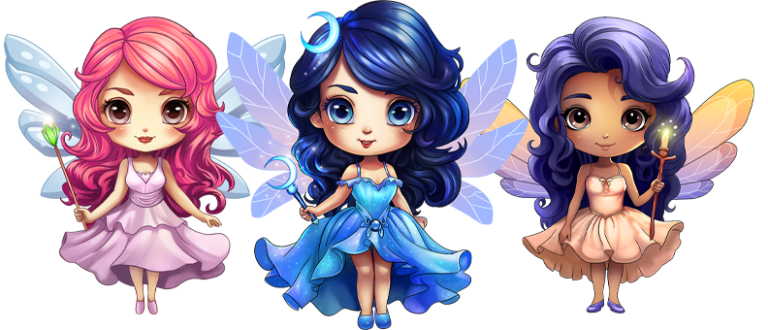Tooth Fairy Questions And Answers
Losing a tooth and expecting a visit from the tooth fairy is an exciting time for your child.
The tooth fairy is a mysterious and magical creature, so your naturally inquisitive youngster is bound to have lots of questions.
There are no right or wrong answers and all families have different tooth fairy traditions, but you if you want to feel a bit more prepared check out our answers to some of the most frequently asked tooth fairy-related questions below.
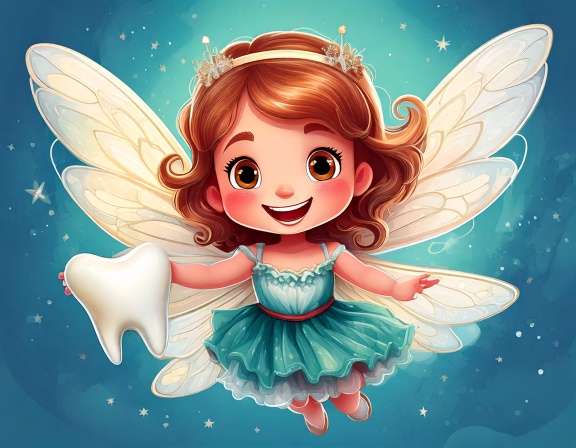
What Does the Tooth Fairy Do With All Those Teeth?
There are several sweet thoughts about what the tooth fairy does with all those teeth that she collects. Many believe that the tooth fairy uses strong white teeth to build her kingdom, using them to form the turrets and walls of her fairy castle.
Other people believe that the tooth fairy uses teeth to make fairy dust, the magical substance that keeps fairies strong and healthy and also helps them to fly.
Some believe that the tooth fairy makes teeth into stars – so you can tell your little one that their teeth will light up the night sky!
Why Does the Tooth Fairy Give Money?
The tooth fairy is famous for giving gifts such as silver coins and golden money to children in exchange for their lost teeth. But why does the tooth fairy give money? The answer goes back to ancient traditions and beliefs.
In Norse culture, children’s belongings were thought to bring good luck to anyone who possessed them – especially teeth. These small tokens were believed to hold powerful protective qualities and were highly valued.
Scandinavian warriors even thought children’s teeth could help turn the tides of battle. They wore special necklaces made of teeth and would pay a “tooth fee” (tand-fe) to collect them. This tradition is believed to be the origin of giving money for lost teeth.
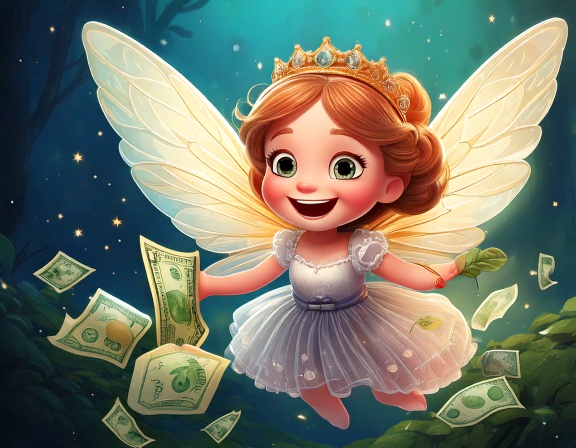
What Is the Tooth Fairy's Name?
If you’ve started the tradition of the tooth fairy visiting your child when they lose a tooth, your little one may ask you “what is the Tooth Fairy’s name?” before she visits.
Although tooth fairies are sometimes known as ‘Angels’, ‘Wishes’ and ‘Pixies’, there’s no official name for the tooth fairy, but coming up with a name can help bring him or her to life and is a fun way to personalise the experience for your child. Tinker Bell is a name often associated with fairies thanks to the popular Disney films, or some parents choose Toothiana based on the tooth fairy character in the film Rise of the Guardians. Why not choose your own name and be as creative as you like?
How Much Does the Tooth Fairy Give in 2025?
Families often find it hard to agree on how much money the tooth fairy should leave their child. For many families, leaving a £1 or 50p coin is plenty, but others may give their children £5 or even more for each tooth. It can be confusing for parents who are new to the tradition, so how much does the tooth fairy give in 2025? The national average in the UK per lost tooth is currently around £3.42, but most parents agree that £1 per tooth is plenty. The tooth fairy tradition doesn’t have to be all about money though – many families like to mark the special occasion of losing a tooth with a certificate or letter from the tooth fairy.
What Is the Tooth Fairy's Favorite Color?
Children get very excited when they lose a tooth, and often ask lots of fun questions about the tooth fairy such as “what is the tooth fairy’s favourite colour?” whilst they wait for her arrival. Although the tooth fairy’s favourite colour isn’t known for certain, most people believe it is white – the colour of healthy teeth, or a sparkly blue that reminds them of the sky.
What Do Tooth Fairies Eat?
Have your children ever wondered what tooth fairies eat? In traditional fairy folklore, many fairies are known for having a sweet tooth. They love enjoying treats like cakes, berries, and cookies, especially during magical forest feasts and fairy tea parties.
However, tooth fairies are a little different from most fairies. They prefer healthier foods such as crunchy apples, juicy pears, and fresh vegetables, as these are much better for your teeth. After all, they care deeply about dental health and like to encourage good habits!
To wash it all down, tooth fairies enjoy sipping on cool, refreshing water or creamy milk. These drinks help keep their own teeth strong, clean, and sparkling bright for all their nighttime visits to children around the world.

Do Tooth Fairies Eat Teeth?
“Do Tooth Fairies Eat Teeth?” is a common question asked by young children when they lose their teeth and are expecting a visit from the tooth fairy. You can reassure your little one that tooth fairies don’t eat children’s teeth and that they would much rather use them to build gleaming fairy castles or to make super sparkly fairy dust!
What Age Does the Tooth Fairy Stop?
There’s nothing more magical than your child believing in the tooth fairy, but what age does the tooth fairy stop? The last baby teeth aren’t usually lost until your child is around ten or 11, but many children stop believing in the tooth fairy a few years before this. However, there’s no real set age when the tooth fairy stops, and just like many other milestones it’s always best to be dictated by your child. If your child has younger siblings, they can then help keep the magic of the tooth fairy alive for their younger brothers and sisters.
What Is the Tooth Fairy's Favorite Animal?
Children are naturally inquisitive about the tooth fairy and love to ask lots of questions about this magical creature. Their curiosity knows no bounds, and they often wonder about everything from how the tooth fairy flies to where she keeps all the teeth she collects.
Often, the best answers come from the child themselves. So if your child asks, “What is the tooth fairy’s favourite animal?” there’s a good chance they already have their own answer in mind. You could turn the question around and ask, “What do you think it is?” to spark their imagination even more.
If they’re unsure, you could suggest an animal with lots of teeth, like a crocodile. Or, for a softer idea, let them know that many believe tooth fairies absolutely love cats—especially because they’re gentle, curious, and love to sneak around at night too!
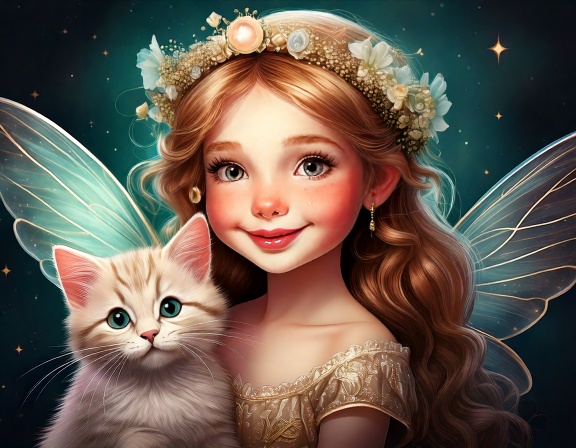
What Is the Tooth Fairy's Favorite Snack?
The tooth fairy’s favourite snack is a tooth-friendly, crunchy apple. Did you know that apples act like a natural toothbrush by stimulating the gums and increasing saliva flow to help clean teeth at the surface as you eat, which in turn helps to prevent cavities? They’re also full of healthy minerals, vitamins and fibre. A visit from the tooth fairy can be a great opportunity to talk to your child about how healthy eating habits lead to healthy teeth.
Is the Tooth Fairy Male or Female?
If your child is expecting a visit from the tooth fairy, they may ask if you if the tooth fairy is male or female. Unlike some mythical characters the tooth fairy often varies in appearance, and although many people imagine the tooth fairy to be a girl, not everyone does.
A leading expert on the tooth fairy, Professor Rosemary Wells, conducted a survey that showed only 74 percent of people thought that the tooth fairy is female. In some countries such as New Zealand and Mexico, the tooth fairy is described as a mouse or rat.
The tooth fairy’s appearance varies from imagination to imagination, and can be female, male or even an animal – it’s all in the eye of the beholder.
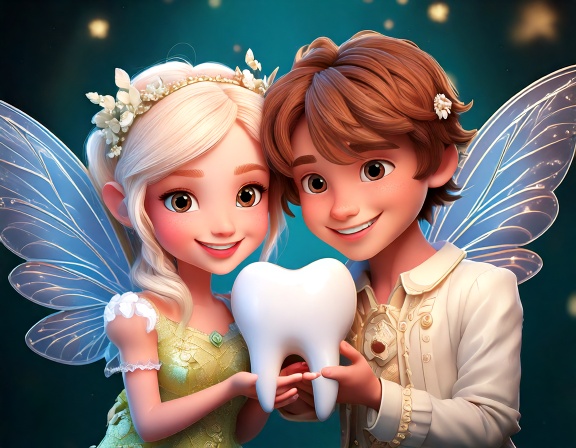
When Was the Tooth Fairy Born?
The Tooth Fairy is more than a hundred years old, and as far as we know she was born in 1908 when she was first mentioned in the Chicago Daily Tribune newspaper. Fairies tend to age slowly, so she is still young in fairy years!
Is There Only One Tooth Fairy?
Children are naturally excited and inquisitive when they lose a tooth, and may ask if there are many tooth fairies or only one. So is there only one tooth fairy? The answer really depends on the story you’d like to use for your family. If your household believes there is only one tooth fairy, you can give your child a tooth fairy letter simply from the “The Tooth Fairy” to show it.
If your family believes there is more than one tooth fairy, you can give your child’s fairy an individual personality to interact with for extra fun. Multiple tooth fairies can be a helpful way to explain why some children receive just money but other children might receive notes and certificates.
How Many Teeth Does the Tooth Fairy Collect Each Night?
Has your child ever wondered how many teeth the tooth fairy collects each night? The answer may just surprise them! It’s estimated that the tooth fairy collects an incredible 300,000 teeth every single night from children around the world, adding up to millions of teeth each year.
Imagine all those little treasures being exchanged for coins, notes, or even small gifts! The tooth fairy’s busy schedule is something many children find both magical and fascinating. The idea of a magical creature collecting teeth from all over the globe is a fun and enchanting thought that makes the tradition even more special.
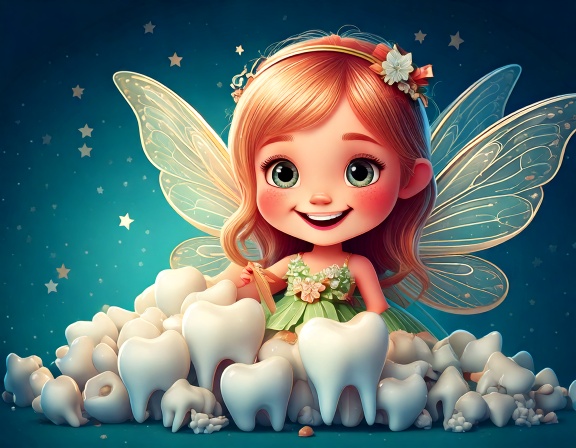
Is Today Tooth Fairy Day?
If your little one is eagerly waiting a visit from the tooth fairy, they may ask you if today is Tooth Fairy Day. Tooth Fairy Day takes place twice a year on February 28th and August 22nd, and it’s the perfect day to celebrate dental care’s most magical little helper with the young children in your life. Tooth Fairy Day is also helpful for encouraging dental hygiene and a great reminder to schedule routine dental examinations for every member of your family.
How Do Tooth Fairies Get in Your House?
When your child is expecting a visit from the tooth fairy, they may ask how tooth fairies can get into your house. Some people think the tooth fairy comes in through a window (but it doesn’t have to be open), and you could leave a sprinkling of glitter on a window ledge to help create a little magic for your child.
Other people believe that the tooth fairy arrives through a tiny door in the skirting boards, sometimes invisible to grown-ups. You can buy a tiny fairy door for your home (lots are available online), or why not make your own?
You’ll need:
- 8 wooden lolly sticks
- Acrylic or Poster Paint
- PVA glue
- Button
- Paintbrush
- Piece of cardboard, 20cm x 20cm
- First, paint your lolly sticks with paint and allow them to dry.
- Paint the back of each stick with PVA glue then stick in the centre of the cardboard so that all the sticks line up.
- Glue the button onto the sticks to make a door handle.
- Cut away the excess cardboard around the fairy door using scissors (you may need to help young children with this step). Your fairy door is now finished and ready to put into place in your home.
How Big Is the Tooth Fairy?
Tooth fairies are very small and very quiet so they can visit a household unnoticed whilst collecting a child’s tooth. But just how big is a tooth fairy? Most people believe the tooth fairy is only around 3 to 4 inches tall.
Why Would the Tooth Fairy Not Come?
Children like to put their tooth under the pillow and get straight to sleep while they wait for the Tooth Fairy to come and leave them money and maybe a letter. On some occasions though, your little one may stay up late or wake up when you enter the room – or a tired parent may fall asleep before getting the job done! If you need to give your child a valid reason as to why would the tooth fairy not come, here are a few ideas…
- The tooth fairy could hear you waking up and had to leave before you saw her (she’s not allowed to be seen).
- Her bag of teeth was very heavy so she had to go home and empty it.
- Your room was a little bit too messy and she couldn’t find your tooth.
- The Tooth Fairy is on holiday but you’ll be the first child she visits when she gets back to work.
- You went to sleep too late and she had to get to the next missing tooth.
- It was the tooth fairy’s birthday yesterday so she was busy celebrating with her fairy friends
How Much Money Do You Give for the First Tooth?
Many parents like to give a bit extra money for the special milestone of their child losing their very first tooth. But how much money should you give for the first tooth? Many parents agree that £2 for a first tooth (and £1 for each subsequent tooth) is enough, although it can depend on lots of factors including your family income.
The momentous occasion of your child losing their first tooth doesn’t have to be all about money either – why not print a free first tooth fairy letter and tooth fairy certificate for your child to treasure forever?
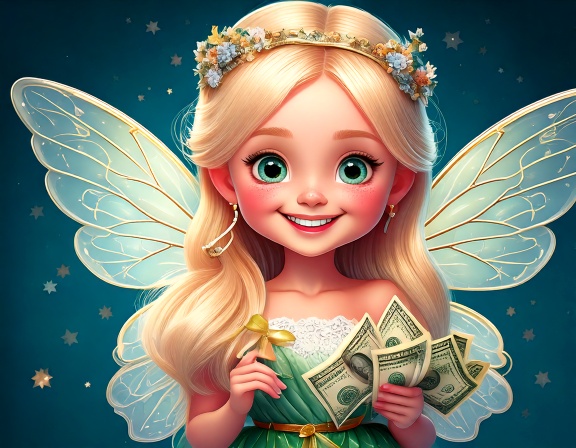
Where Do Tooth Fairies Live?
Have you children ever asked where tooth fairies live? The exact address is a big secret, but we do know that the tooth fairy lives in a huge white castle made of the teeth that she collects, with high towers and a sparkling moat, and that her castle is part of the tooth fairy kingdom.
Why Does the Tooth Fairy Collect Teeth?
If your child is waiting for a visit from the tooth fairy, they may ask why the tooth fairy collects teeth. The main reason is because healthy teeth have plenty of collagen in them, which makes them the perfect material for building her castles in her fairy kingdom.
What Do Tooth Fairies Look Like?
Anticipating a visit from the tooth fairy is a very exciting time for young children, and they may want to find out what tooth fairies look like. Unlike Santa or other mythical characters, the tooth fairy often varies in appearance. In some countries including the UK and the US the tooth fairy appears as a small fairy figure with a wand and wings who sprinkles fairy dust wherever she goes, and often looks similar to Tinkerbell in the Peter Pan stories. In many Spanish-speaking countries the tooth fairy is described as a little rat or mouse.
Where Does the Tooth Fairy Get Her Money?
The tooth fairy is well known for her generosity, leaving children shiny coins in exchange for their lost teeth. But where does the tooth fairy get her money? Many experts believe she makes her money using her magic wand, and may even leave a little bit glitter or fairy dust behind on the coins.
How Does the Tooth Fairy Know You Lost a Tooth?
If your child is expecting a visit from the tooth fairy, they may wonder how the tooth fairy knows they have lost a tooth. The tooth fairy stores the name of all the children in the world and has them written in her Tooth Library inside her fairy castle. During the day, it’s rumoured that she sends little sprites around the world to write down the names of the children with loose teeth, and the tooth fairy checks the list at dusk to see who see might be visiting. She is also said to have a golden bell inside her Tooth Fairy Castle that chimes whenever a child loses their tooth.
Does the Tooth Fairy Leave a Note?
A visit from the tooth fairy is a truly exciting time for any child, especially if they know the tooth fairy might leave them a special gift. Your child might also ask you if the tooth fairy will leave a note as well as money. These little surprises can make the experience even more magical and memorable.
Notes, letters, and certificates from the tooth fairy always go down well with children and encourage them to look after their teeth for the next time the tooth fairy visits. Notes from the tooth fairy are also lovely for children to treasure as a keepsake, reminding them of the magical moment each time they look back. These thoughtful gestures can create lasting memories and make the tradition feel even more enchanting. Check out our editable tooth fairy notes here to make your tooth fairy visits even more magical!
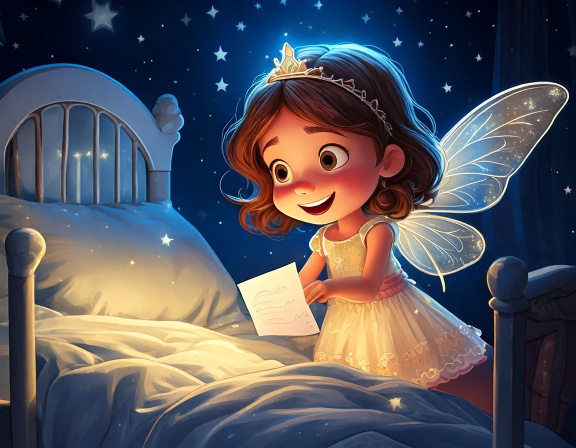
Why Do We Put Teeth Under Pillows?
If your little angel has just lost their tooth, they might be inquisitive about why we put the tooth under a pillow for the tooth fairy. Fairies want to keep the tooth in good condition, so under a soft pillow is a perfect safe place. If your child doesn’t want to leave their tooth under their pillow, they could leave it in another safe place like a bedside cabinet.
Some children like to put their tooth in a small container so the tooth fairy can find their tooth under their pillow easily, and it’s easy to make your own:
- Find a small container such as an old jewellery box, mint tin or even an old lip balm container.
- Get crafty with stick on gems, paint, glitter and stickers.
Does the Tooth Fairy Work on Weekends?
If your child loses their tooth on a Saturday or Sunday, they may be worried that the tooth fairy might not visit. So does the Tooth Fairy work on weekends? She does usually work on Saturdays and Sundays so you child doesn’t need to be concerned if they lose their tooth on a weekend. Of course, sometimes parents need a little extra time to prepare for the tooth fairy to visit, so you could always tell your child that the tooth fairy is having a well-earned weekend off if you need to!
Fun Fact: The tooth fairy is an essential worker who even carried on working during the coronavirus pandemic. New Zealand Prime Minister Jacinda Ardern assured worried children that the tooth fairy would still visit during the pandemic, and in the U.S the Chief Medical Advisor Anthony S. Fauci let children know that the tooth fairy was not at risk of infection.
Can the Tooth Fairy Fly in the Rain?
If the weather is wet and stormy on the evening your child loses their tooth, they may ask if the tooth fairy can fly in the rain. It is thought that the tooth fairy cannot fly if it is raining because they don’t want to get their wings wet. Additionally, they might have to wait until it is safe to fly if the weather is too windy.
Some say the tooth fairy uses magical powers to make sure they can fly no matter the weather, ensuring they don’t miss any visits! This belief adds a bit of extra magic to the tradition, making the tooth fairy seem even more mysterious and wonderful.
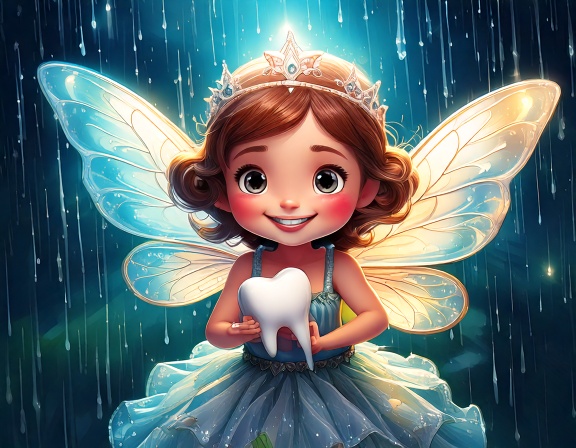
Does the Tooth Fairy Have Helpers?
The tooth fairy collects around 300,000 teeth each night from children around the world, which is quite a big task! So does the tooth fairy have helpers? Many people believe that the tooth fairy does have helpers to make sure she visits kids in every country who have lost a tooth. Finding more fairies in other countries can be difficult, so a lot of the time these helpers are small, friendly animals.
How Did the Tooth Fairy Start?
The tooth fairy is famous around the world for visiting children when they lose their teeth and for bringing a gift or coins. But how did the tooth fairy start?
It’s thought that the tooth fairy tradition can be traced back nearly a millennium to the Norse peoples of Europe in the 10th century. A tradition called the “tand-fe” is found in the early writings of Norse traditions, where adults would pay a small amount of money when children lost their first tooth. Many years later in 1908 an author named Lillian Brown gave parents the more modern idea of the Tooth Fairy in the Chicago Tribune, suggesting that they left a small gift of 5 cents under the pillow for each lost tooth.

